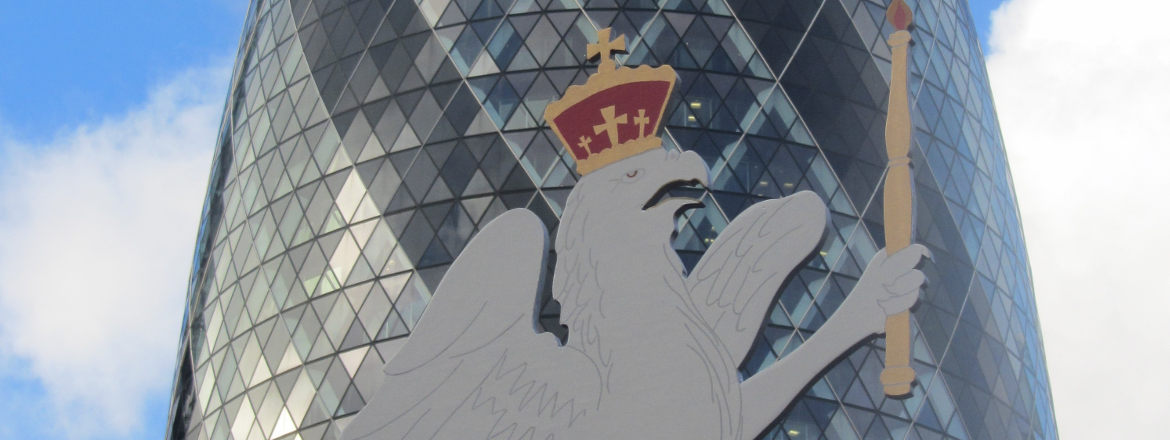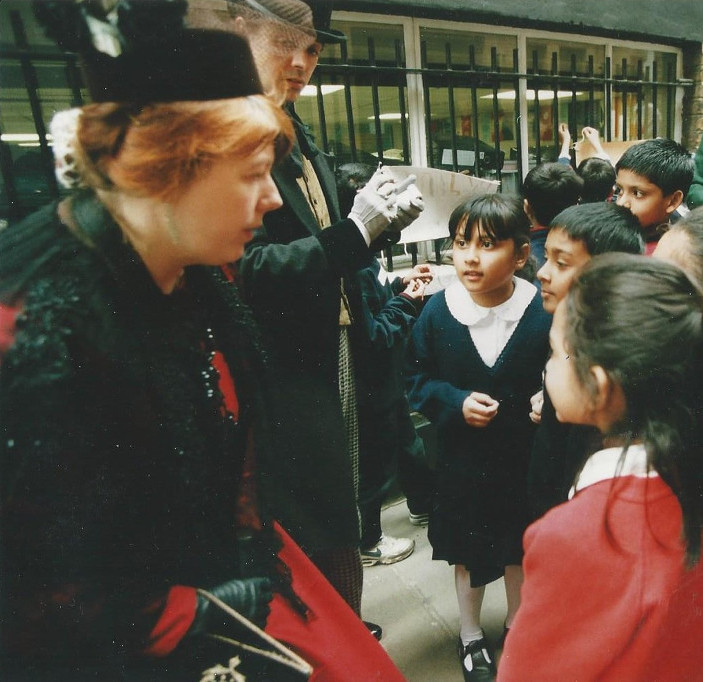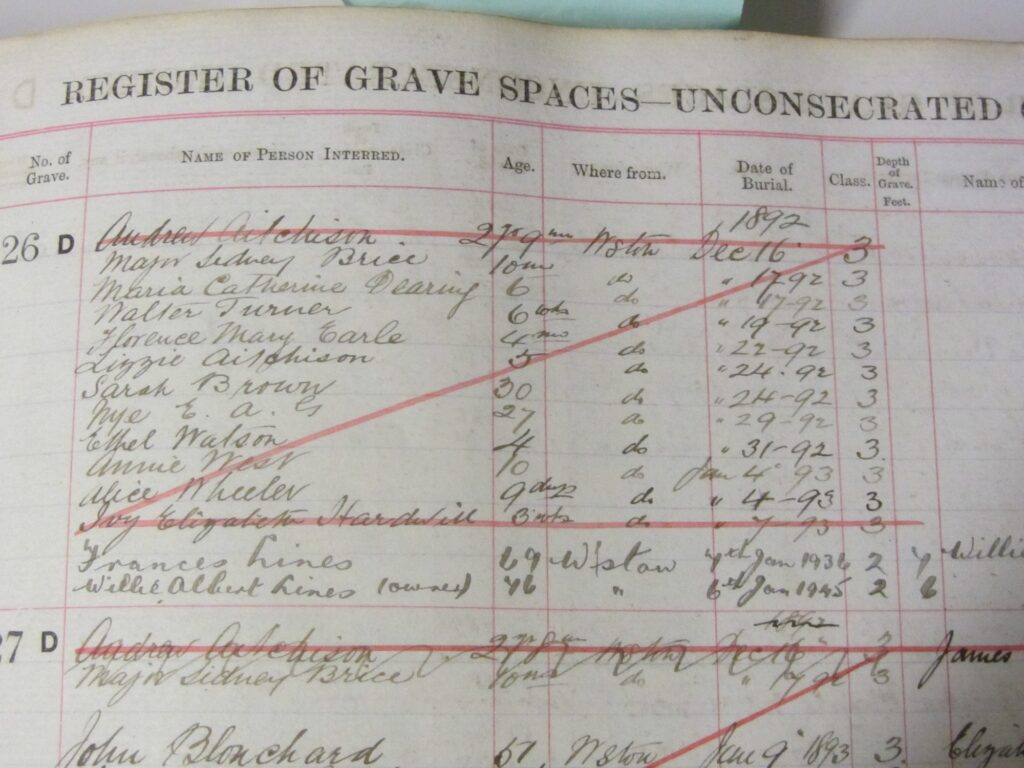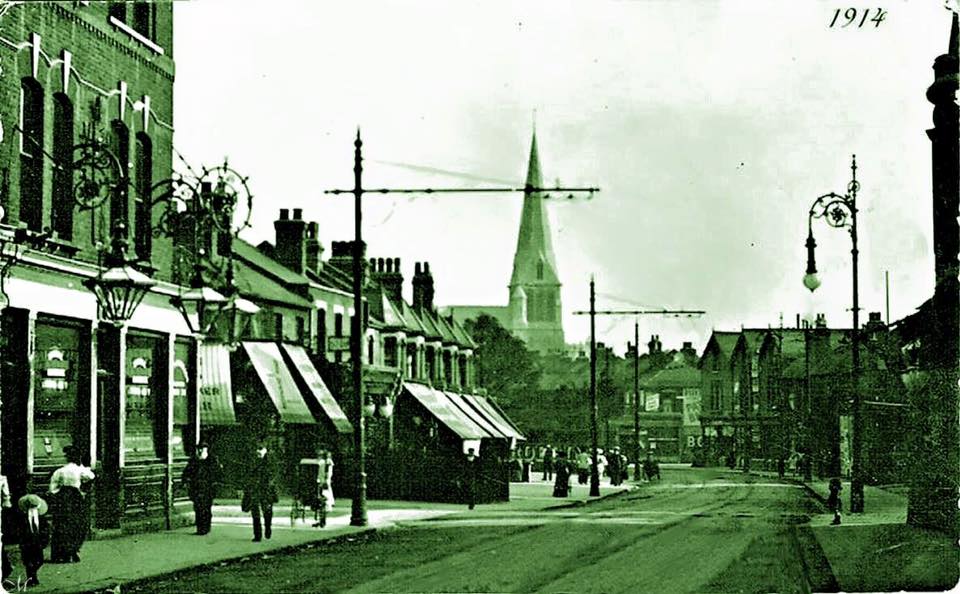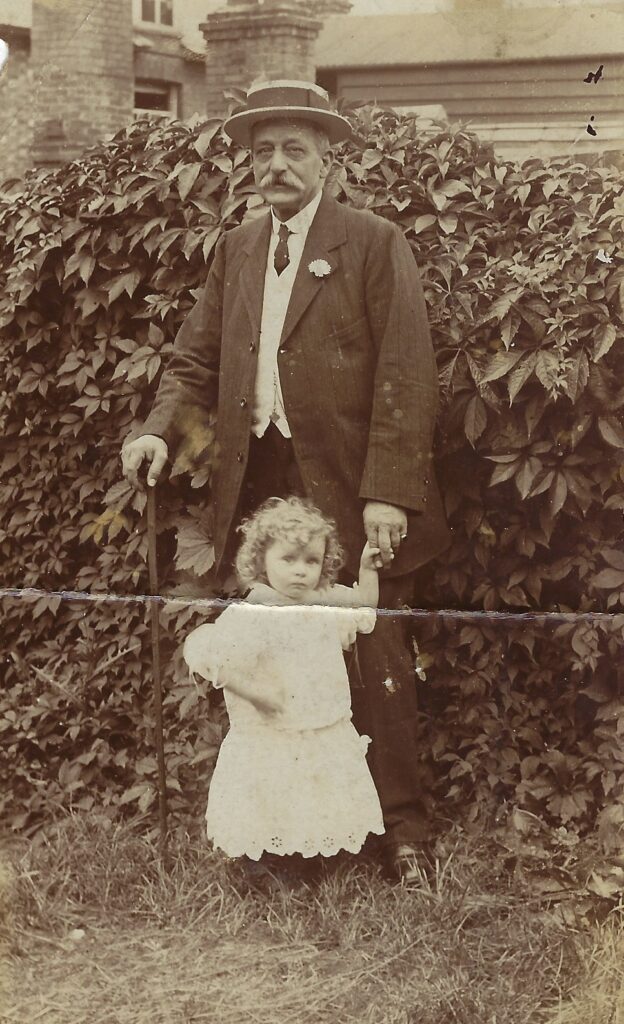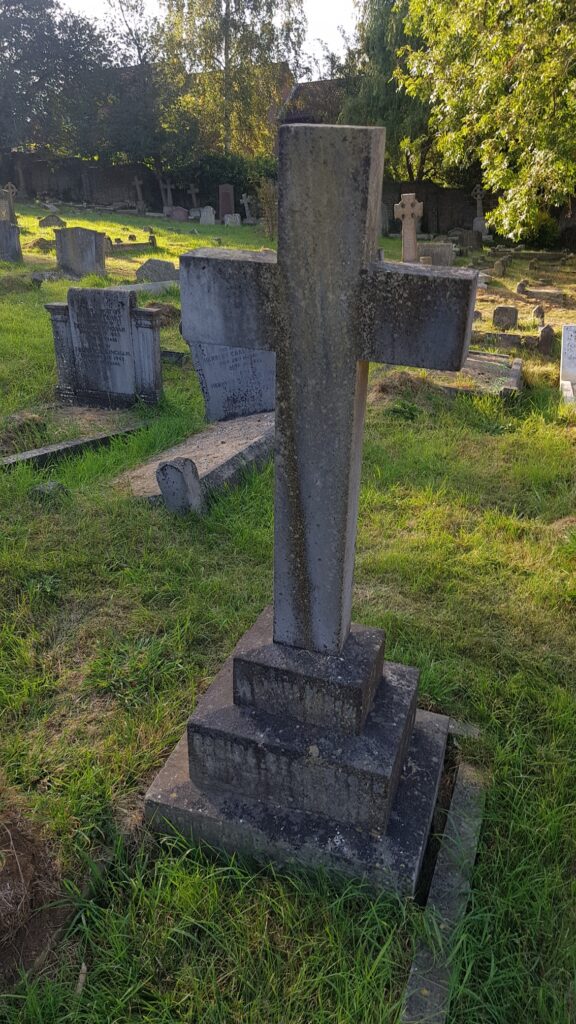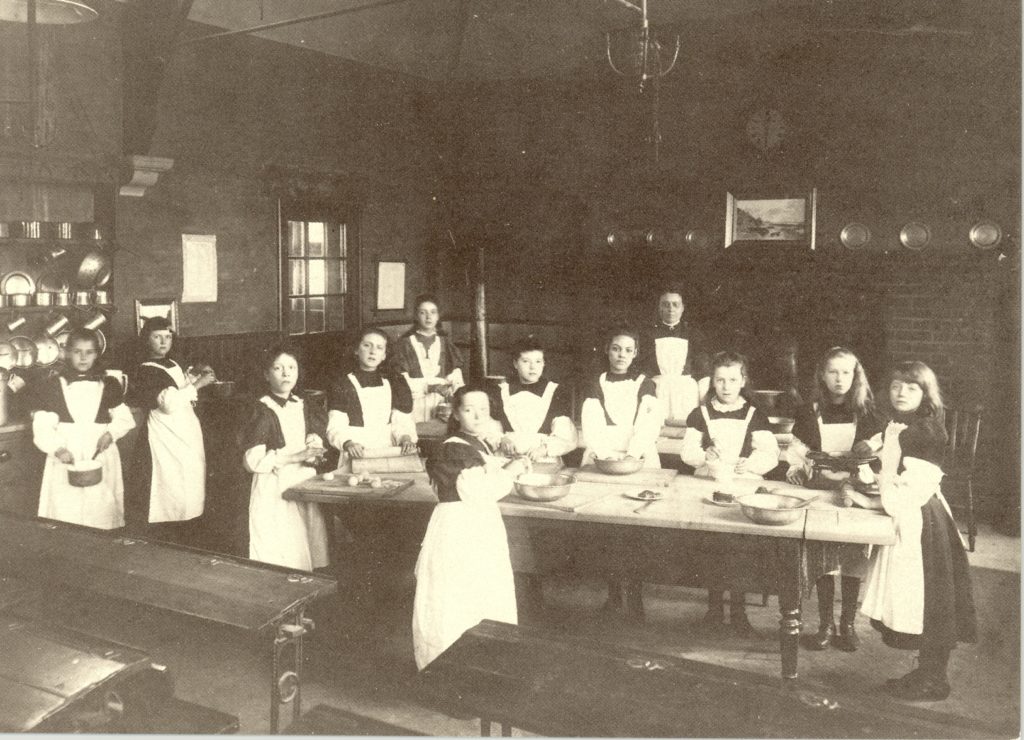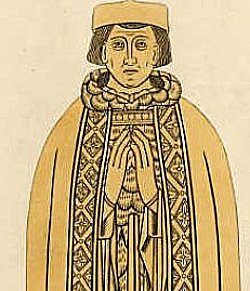“A respected benefactress” – the bonneted shade of Miss Elizabeth Cass might be forgiven a wry smile at our expense. She and her equally well regarded sister Phebe have given posterity the slip, and got clean away, thanked, and unchallenged, although their weed-choked memorial would hardly please them.
Elizabeth Cass lived in one of Walthamstow’s grandest houses at a time when this was still a small country town, and when Orford Road was still known as Church Common Road . Orford House is still standing, although its elegant white frontage is so far back from Orford Road that many people walk past without realising it is there. A stuccoed two storey, gracious “gentleman’s residence”, the third house on the site, it was built in around 1801 – and it seems lost without its surroundings of gardens, stables, meadowland and ornamental pond. This was a neighbourhood popular with merchants and bankers who had made a fortune in the City and wanted space, healthy air and a desirable residence in its own grounds, all within easy reach of their places of work. Hoe Street, Marsh Street (now the High Street) and the area round St Mary’s church were fringed with substantial houses.

Externally, Orford House remains much as it was when Elizabeth and Phebe Cass lived there. Socially they must have settled well into the neighbourhood, differing from their affluent neighbours only in that these were two single women running their own lives. Internally one of the few features remaining from their time is the elegant cantilevered staircase. This was a house that took several servants to maintain: some, including a long-serving housekeeper, are remembered in the will of Elizabeth Cass. We know, too, that the many rooms were expensively fitted out with luxury items such as silver tea sets, jugs and candlesticks, as well as gilt looking glasses and opulent furnishings. This was only a small part of the property owned by the Cass sisters, who lived in Orford House only in the last years of their lives. There were several other freehold and leasehold houses in Walthamstow, some but not all inherited from their father. These women were not merely prosperous, but rich. Orford House in their day was smaller, without its eastern extension. It would, however, have provided a generous home for two ladies and their servants. We know that both sisters were devout, with Bibles and prayer books precious enough to be left as bequests, as are items of embroidery equipment and some of the work they produced.
Their parents, John and Phebe Cass, had moved to Walthamstow from Whitechapel where they retained business links and a house. This John Cass was descended from a cousin of “the” Sir John Cass who left his fortune to maintain the school for poor London children he and his wife had founded. Famously, Cass died suddenly in 1718, before he could sign every page of his newly redrafted will, and it took thirty years to settle the legal case that dragged on between the those who wanted to see his wishes carried out and the “heirs at law” – relatives who wanted his fortune for themselves. Interestingly, though, there is evidence that the network of cousins evidently stayed in touch and took an interest and pride in the Cass school. This went on being the case for many years – however, the court case dragged on well into the lifetime of the John Cass who moved into Walthamstow and who was born in 1732, and the case was not resolved until 1748. It becomes less surprising, then, that his daughter Elizabeth left some of her fortune to Sir John Cass’s school, and to the other charities he had favoured.
Sir John Cass had been an only child, son of Thomas Cass who had made a fortune from the rebuilding of London in the aftermath of the 1666 fire. He was himself the son of an innkeeper, yet another John Cass, possibly of French descent. Sir John Cass was a highly successful City businessman and politician. He was an MP, alderman, liveryman of both the Carpenters and then the more prestigious Skinners Company. He was also one of the many City businessmen of his day who invested in the Royal African Company, whose main activity was slave trading – more than that, he served on the ruling Court of the company in an attempt to bring them back into profit after Bristol had become the British hub of the slave trade. Ironically, although Cass held £5,000-worth of stock in the Royal African Company, it appears that the dividends he received over a period of years added up to less than £200, a drop in the ocean in terms of a fortune that ran into millions. This is not to obscure the fact that Cass, and his City colleagues, would have been more than happy to take any money from slavery that was on offer. The reality, however, is that the money that went to set up the Cass Foundation was overwhelmingly derived from building and rents.
Two generations on, the Cass cousins who had failed to hijack the fortune of Sir John Cass, and their descendants, had not been idle, and were certainly a part of the City of London. A Mary Cass was a glover (at this time women could trade in their own right); a John Cass of the next generation, perhaps her son, was her apprentice, and later became a haberdasher. Clearly the money-making gene was a dominant one in the Cass family. The John Cass who moved to Walthamstow was a wealthy man who left his daughters a fortune in property and stocks and shares. He evidently also left them the confidence and knowledge to operate in the business world for themselves: there are records of a number of court cases in which Phebe and Elizabeth Cass took action over matters relating to their property portfolio. The family retained their house in Whitechapel – Elizabeth paid the insurance for it in her final year – and it seems likely that they continued to think of this as their main home.
When Elizabeth Cass made her will she was able to make bequests to over a dozen charities. Most of these were for £3,000 or £4,000 (multiply by at least 200 for a present-day value) , and this does not take into account the value of her freehold properties or the contents of her house. In Walthamstow there are bequests of £500 to a local school, and £4,000 to be invested and the income used for the local poor, stipulating beneficiaries should be of good character and should be members of the Church of England. A small sum was to be put aside each year for the maintenance of the Cass family grave, and £30 earmarked to be given annually to the vicar and churchwardens for their trouble in administering the bequest. However, the bulk of the legacies were made to London charities, including not only those favoured by Sir John Cass but a number of others including a home for female orphans. Elizabeth also left annuities, mostly of £50 a year (an adequate but not generous income), to several cousins and former servants, with careful instructions that the money should be paid only to the intended recipient and no one else: not unusual at this time when it was not unknown for attempts to be made to “sell on” the right to an annuity.

All the instructions appear to have been honestly carried out for nearly two centuries. Elizabeth shares the grave of her parents and sister as she wished. The inscription, almost certainly chosen by her executors, records her as “a liberal benefactress to many charitable institutions, but especially to the parochial schools and the poor of this parish”. They credit her with having lived a “truly Christian life and died in hope of a better world”. It is a sadness, though, to record that Elizabeth Cass’s Walthamstow charity was dissolved as recently as 2017, and, looking at the present state of the Cass family memorial in the churchyard of St Mary’s Walthamstow it looks as if it has suffered from several years of neglect. Ivy has grown over it, and the only inscription that is currently decipherable is that of Elizabeth’s sister Phebe. Organised as well as kindly people, they would certainly resent it.

